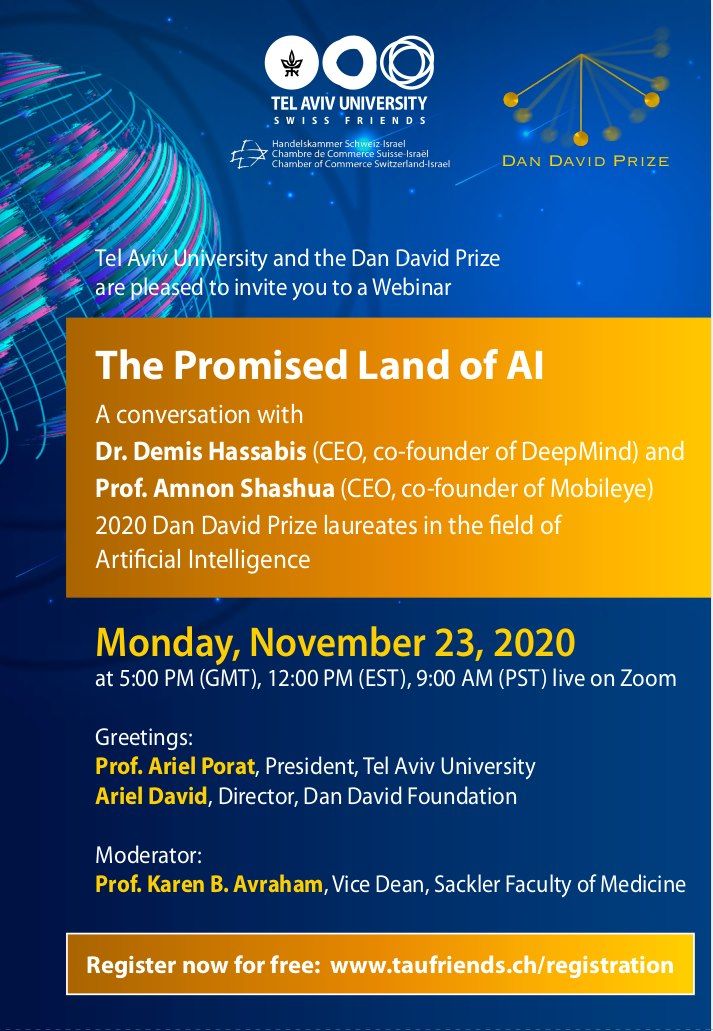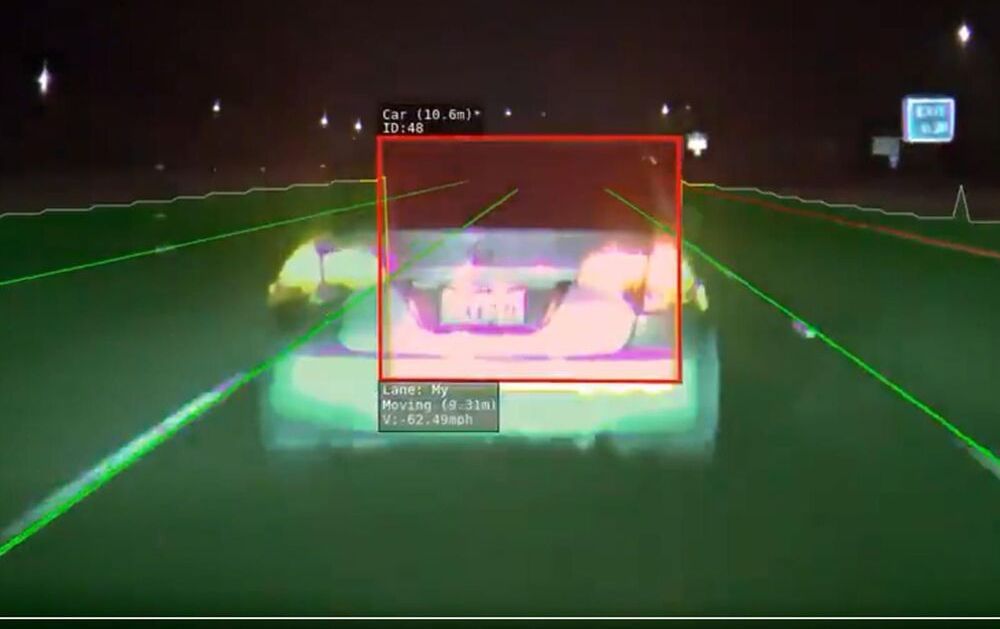Machine-learning system GPT-3 has drawn plaudits from around the world for its remarkable ability to generate text with minimal human input. One scientist even believes it is showing signs of consciousness dailystar.



(next Monday, 23rd November)
Please pre-register at https://www.taufriends.ch/registration
Please pre-register at https://www.taufriends.ch/registration
“We are delighted to bring you access to two giants in the world of AI, 2020 Dan David laureates, Dr. Demis Hassabis, co-founder and CEO of DeepMind, the world’s leading AI research company, and Prof. Amnon Shashua, CEO and co-founder of Mobileye, the largest ever Israeli acquisition whose technology powers more than 55 million cars around the world today. Dr. Hassabis and Prof. Shashua will enlighten us on the potential of AI at an exclusive event in conjunction with the Dan David Prize on Monday, November 23, 2020.”
Video. Japan made robo-wolves to frighten off bears.
Pretty creative! 😃
The town of Takikawa on the northern island of Hokkaido purchased and installed a pair of the robots after bears were found roaming neighbourhoods in September. City officials said there have been no bear encounters since they deployed the robotic red-eyes blonde animal guardians were deploying ed to the city.
Original Article: http://www.dailymail.co.uk/sciencetech/article-8937567/Japan…bears.html
Original Video: http://www.dailymail.co.uk/video/news/video-2290544/Video-Ja…bears.html
Daily Mail Facebook: http://facebook.com/dailymail

Article from carbuzz.com. Was this human or AI error?
Semi-autonomous driving systems continue to come under the microscope, and the results are mixed. Tesla’s Autopilot system is one of the more well-known examples, and while some drivers like this Model 3 owner have faith in the technology, we have seen some disturbing instances of the system potentially leading to serious crashes.
Well, yet another Tesla was involved in a nasty crash and is a reminder that humans and driving aids don’t always make a safe combination. The video — recorded by the car’s camera system — was shared by GreenTheOnly on Twitter, a hacker who has previously uncovered some of the shortcomings of Tesla’s in-car tech. It’s not known what Tesla model this was.




Skeptical. But, wonder if will trigger major funding boost if true.
Any credible list of influential books about tech from the last decade would include AI Superpowers: China, Silicon Valley and the New World Order by Kai-Fu Lee. Considered the world’s foremost authority on artificial intelligence, Taipei-born Lee got an early start, writing a pioneering speech-recognition program while a student at Carnegie Mellon in the 1980s. He later had a career in China and the U.S. at Apple, Microsoft, Silicon Graphics and Google, where he was president of Google China. Now based in Beijing, Lee runs a venture capital firm called Sinovation, which focuses on AI investments. The interview with Lee took place (virtually) in early October.
Forbes Asia: AI Superpowers made you a global business star. Why did you write the book?
Kai-Fu Lee: China has—thanks to data, AI, and the entrepreneur ecosystem—rapidly evolved from a copycat into a true innovator. It currently co-leads artificial intelligence with the United States. When AI Superpowers came out in 2018, I think it was a bit surprising to people.

Would you be okay to have these injected in you?
Engineers at Cornell University developed a microscopic robot – so small it’s invisible to the naked eye – that walks. It’s so tiny that ten could fit within a period. The team says they can manufacture one million of the robots per week.
The new robot is essentially a microchip on four origami-inspired legs that can be activated by lasers. It was designed to crawl inside the human body, find and eliminate diseases. It can be steered by beaming a laser at its feet, which causes their leg to bend.
Itai Cohen and Paul McEuen Labs, leaders of this invention, envisions them as a beneficial medical tool to do things like hunt down and destroy cancer cells. The micro-bots are so small they can be injected into the body.
